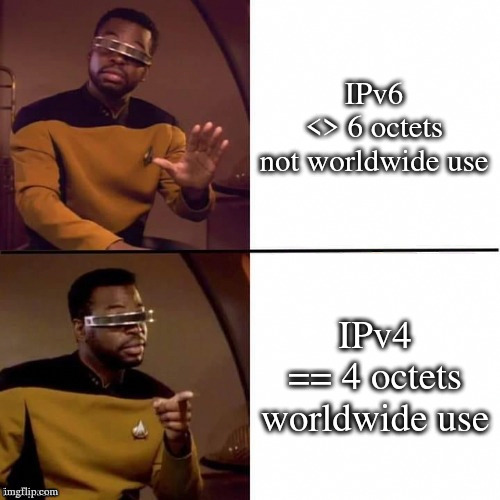this post was submitted on 19 Jun 2024
316 points (85.9% liked)
Programmer Humor
19488 readers
984 users here now
Welcome to Programmer Humor!
This is a place where you can post jokes, memes, humor, etc. related to programming!
For sharing awful code theres also Programming Horror.
Rules
- Keep content in english
- No advertisements
- Posts must be related to programming or programmer topics
founded 1 year ago
MODERATORS
you are viewing a single comment's thread
view the rest of the comments
view the rest of the comments

Sure. But the IPv6 implementation is a bit like if we went "you know the y2038 problem of 32 bit numbers, and how goin under 1970 is sometimes hard? Lets solve it by making it start from the big bang and store time as a 256 bit integer so we don't run out until year 3.1 x 10^69".
IPv6 is big enough for 340,282,366,920,938,463,463,374,607,431,768,211,456 unique addresses. Are we expecting to create an universe consuming army of exponentially replicating paper clip converting robots that each need an IPv6 address or something?
Having a large range has a number of benefits though. Companies that have dozens of IPv4 ranges may be fine with a single IPv6 range, which simplifies routing rules.
A lot of features in IPv6 take advantage of the fact that networks have at least a /64 range (at least if they're built correctly according to RFC4291 and newer specs). SLAAC is a major one: Devices can auto-configure IP addresses without having to use something like a stateful DHCP server.